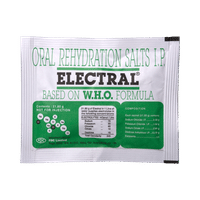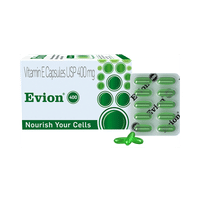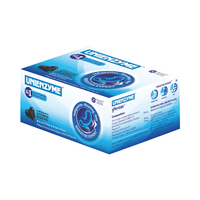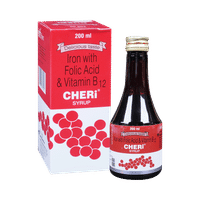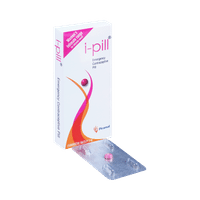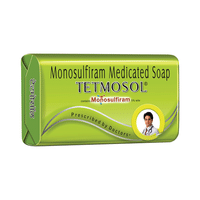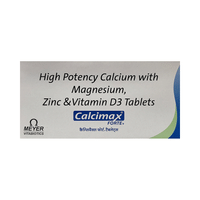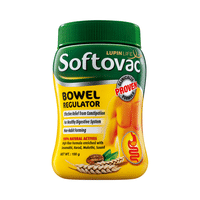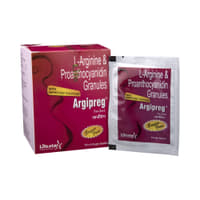Clorega-S Lotion
Rs.153for 1 bottle(s) (30 ml Lotion each)
food interaction for Clorega-S
alcohol interaction for Clorega-S
pregnancy interaction for Clorega-S
lactation interaction for Clorega-S
medicine interaction for Clorega-S
food
alcohol
pregnancy
lactation
medicine
No interaction found/established
No interaction found/established
Clorega-S Lotion may be unsafe to use during pregnancy. Although there are limited studies in humans, animal studies have shown harmful effects on the developing baby. Your doctor will weigh the benefits and any potential risks before prescribing it to you. Please consult your doctor.
CONSULT YOUR DOCTOR
Clorega-S Lotion is probably safe to use during breastfeeding. Limited human data suggests that the drug does not represent any significant risk to the baby.
SAFE IF PRESCRIBED
No interaction found/established
SALT INFORMATION FOR Clorega-S
Clobetasol(0.05% w/v)
Uses
Clobetasol is used in the treatment of allergic skin conditions.
How it works
Clobetasol is a steroid. It works by blocking the production of certain chemical messengers that make the skin red, swollen and itchy.
Common side effects
Skin atrophy, Telangiectasia, Skin irritation, Dry skin, Stretch marks, Cushing syndrome, Suppression of adrenal gland function, Posterior subcapsular cataract, Increased intraocular pressure, Skin rash, Scaling, Induration (hardening of a normally soft tissue or organ), Lichenification, Exacerbation of psoriasis, Plaque elevation, Excoriation
Salicylic Acid(3% w/v)
Uses
Salicylic Acid is used in the treatment of acne.
How it works
Salicylic Acid is a keratolytic medication. It treats pimples (acne) by penetrating into the skin and killing acne-causing bacteria. It additionally reduces oil production in the skin, replenishes acne-prone skin, and it also keeps your pores open.
Common side effects
Erythema (skin redness), Scaling, Sensitivity, Dryness, Irritation
SUBSTITUTES FOR Clorega-S
35 Substitutes
35 Substitutes
Sorted By
 Rs. 150save 3% more per ml of Lotion
Rs. 150save 3% more per ml of Lotion Rs. 152save 41% more per ml of Lotion
Rs. 152save 41% more per ml of Lotion Rs. 208.94pay 36% more per ml of Lotion
Rs. 208.94pay 36% more per ml of Lotion Rs. 130.84save 17% more per ml of Lotion
Rs. 130.84save 17% more per ml of Lotion Rs. 80save 49% more per ml of Lotion
Rs. 80save 49% more per ml of Lotion
Expert advice FOR Clorega-S
- Clobetasol is used to treat redness, swelling, itching, and discomfort of various skin conditions.
- It should be applied to the affected areas as a thin film, two times daily, or as advised by your doctor.
- Do not use it more often or for longer than advised by your doctor.
- Do not cover the area being treated with airtight dressings such as bandages unless directed by a doctor, as this may increase the risk of side effects.
- If you think the area of skin you are treating has become infected you should stop using Clobetasol and consult your doctor.
- Consult your doctor if your skin condition has not improved after four weeks of treatment. Do not use it for more than 4 consecutive weeks at a time.
Frequently asked questions FOR Clorega-S
Clobetasol
Q. Can Clobetasol be used for a long time?
No, Clobetasol should not be used for a long time. It is generally prescribed for 2 consecutive weeks only. However, the treatment can be longer for chronic (long-term) inflammatory conditions. Consult your physician before using this medication.
Q. Does Clobetasol cause severe skin reactions?
Severe skin reactions are quite rare with Clobetasol. Clobetasol is an anti-inflammatory drug which is used to treat skin diseases, skin reactions and eczemas. However, skin reactions can occur in a person who is hypersensitive to Clobetasol. It is important to leave the affected area open after applying Clobetasol as using occlusive dressings (air- and water-tight dressing) can lead to skin reactions. The medicine may not itself cause a reaction but the added excipients with the medications can lead to a reaction in some cases. Inform your doctor immediately in case you encounter any skin reactions.
Q. Can Clobetasol be used on the face?
No, Clobetasol should not be used on face. Along with that, its use should be avoided in other areas like the axillae (armpits), groin and if there is atrophy (wasting away of tissues) at the treatment site. However, in certain circumstances, the doctor may prescribe Clobetasol only when considered necessary. It should be used only after consultation with your physician. and if possible, the application on face should be limited to a maximum of 5 days.
Salicylic Acid
Q. How should Salicylic Acid be applied?
You should remove all of the make-up. Wash your hands and the affected area and gently dry. Put a thin layer of Salicylic Acid cream on the affected skin, using your fingertips. Apply it to the entire area affected by acne, not just each spot. After applying, wash your hands thoroughly with water.
Q. Should Salicylic Acid be left overnight?
At the beginning of the treatment, Salicylic Acid is usually used once daily in the evening. The area is not washed off after application of Salicylic Acid, so it can be left overnight unless you experience irritation. However, if you experience irritation, consult your doctor.
Q. What should prompt me to discontinue Salicylic Acid?
You should discontinue Salicylic Acid and consult your doctor if you experience severe local irritation, which means severe redness, dryness and itching and stinging/burning sensation.













